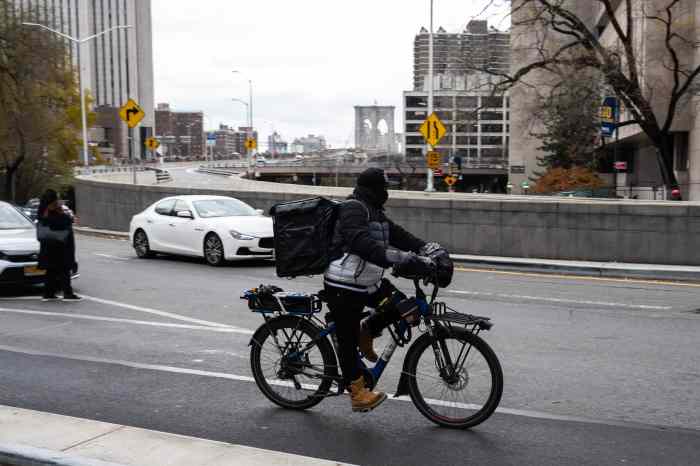It was on a beautiful early autumn Sunday, the final day of the 1950 major league baseball season when my father and I entered the old dilapidated, wooden, ground level, Metropolitan Avenue station, which appeared to my 12-year-old eyes to be a sunken frigate in a sea of red brick houses, and the train like something out of an old western, I thought, as we made our way to the front car.
With the hissing sound of air brakes we were off along the ground level (formerly Lutheran Line) right-of-way. The Lutheran Line was a steam dummy railroad opened by the Bushwick Railroad in 1881 for the purpose of carrying visitors from Brooklyn to the Lutheran Cemetery in Middle Village, Queens. Our train consisted of 1890s vintage gate cars so called because the vestibules at the car ends were open and conductors had to operate by hand iron gates for boarding passengers. With the mournful moan of traction motors, tired but proud veterans with 60 years of faithful public service, staggered up the ramp leading into the Fresh Pond Road station.
After leaving Fresh Pond we proceeded along a steel elevated structure above an alleyway which was originally used as a right-of-way by Lutheran Line steam dummy trains and later by Flushing-Ridgewood trolleys until replaced by buses in 1949. A few minutes and a few stations later, we reached Myrtle-Wyckoff Avenues, the Brooklyn-Queens border.
We were now above Myrtle Avenue in Ralph Kramden country. It was high noon and the air was buzzing with talk of the Dodgers-Phillies showdown which would decide the National League pennant. In those days you could not ride a BMT elevated train, trolley or walk down a Brooklyn street and be unaware of the Dodgers. Beyond Broadway-Myrtle Avenue we rode on an antiquated, spindly elevated structure, built in 1889, which could only support the lighted, wooden elevated cars.
With our noses pressed to the front windowpane, we observed on Nostrand Avenue, something like a scene from "A Tree Grows in Brooklyn" people sitting on brownstone stoops with a large, center door. Peter Witt, flagship of the behemoth BMT trolley fleet, passed by. Finally we arrived at the Bridge-Jay Streets terminal where the friendly conductor informed us that until 1944 the "El" ran across the Brooklyn Bridge to Park Row, Manhattan. To the pleasant hum of a modern trolley, we glided across John Roeblings Bridge.
Elevated trains, trolleys and Dodgers, I had seen Brooklyn at its best but it was not to last. The Brooklyn trolleys would be gone by the end of 1956 and the Dodgers would leave for Los Angeles a year later. Myrtle, however, like Old Man River, would keep on rolling awhile longer. The late afternoon elevated train ride back to Metropolitan Avenue was quiet. The Dodgers had lost the pennant to the Phillies. It was a sad day for Brooklyn but not for me, in those days I rooted for Rudys team.
By the late 60s Brooklyn had changed as had Myrtle. Wood and steel composite, 1600 series (Q) cars with enclosed vestibules had replaced the gate cars in 1958. My personal life had changed too. My father passed on, my mother retired to Florida and I had married and moved to Middle Village. At that time I was an evening student in downtown Brooklyn. I enjoyed riding the "El" home from Bridge-Jay Streets after classes. In an age of cold high-rise bombshell projects, I found the wooden cars, kerosene lanterns and pot bellied stoves comforting, a reminder of simpler times and an older, warmer Brooklyn.
The end of the line for old Myrtle cars was on Friday, October 3, 1969. That evening after work I rode 1620 C to Bridge-Jay and back to Metropolitan Avenue along with several boisterous rail fans. Thus have the tides of change swept away the last New York City transit line to use wooden cars in regular service. Myrtle-Chambers M subway trains still operate over the newer and rebuilt portion of the "El" between Broadway-Myrtle and Metropolitan Avenue using steel cars.
A few "El" cars were saved (sadly not 1620C), the chosen, having gone to the Court Street, Brooklyn Transit Museum and the Shoreline Trolley Museum in East Haven, Connecticut.
I got off at Metropolitan Avenue, bid farewell to an old friend and headed home. Myrtle may now rest in peace in Railroad Heaven.
-reprinted from the Juniper Berry magazine































